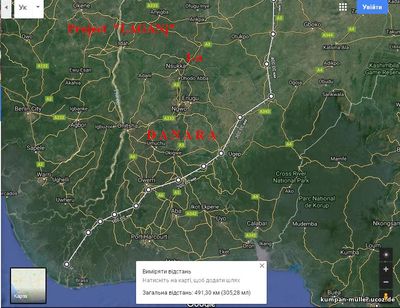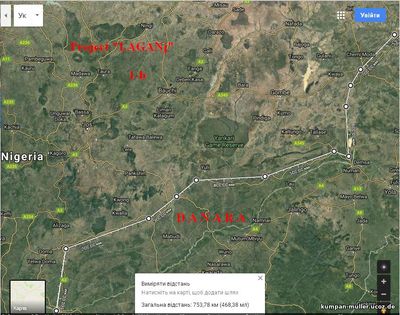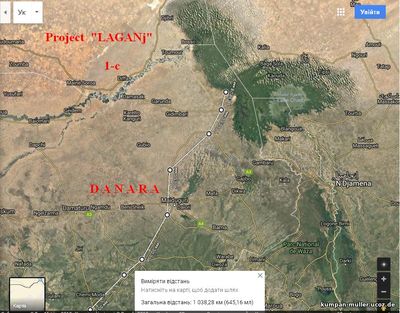Alexander Vasiljev-Muller Dr.econ(PhD)
Publisher
| Главная » Статьи » Law-Preservation-labour / "Все богатство из Труда"(Библия) по Закону Сохранения Труда |
Abram Petrovich Hannibal *, descendant of an African prince who sincerely strove to civilize
The project of the revival of the African "LAGAN (With love of the World)" ** Ecology seeks to educate ... Awareness of the intellectual elite of the World of environmental problems in the last decade is taking place exponentially. The statement of the need to solve social, environmental and economic problems permeates every speech of responsible politicians of national states, such as Nursultan Nazarbayev, President of Kazakhstan [1]. The sad fate of the Aral Sea begins to be repeated by other major water bodies in the world - primarily Lake Chad in Central Africa and On the Internet, today we find the following messages: " Photo of Lake Chad in Tense struggle of the countries of the world for the salvation of Lake Chad Information note:, a freshwater lake located in the Sahelian zone of West-Central Africa in the Lake Chad, a French lak chad On May 22, 1964, the Lake Chad Basin Commission (LCBC) was established by four countries bordering Lake Chad: The mandate of the Commission is to ensure the sustainable and equitable management of Lake Chad and other shared water resources of the The Commission today intensified its cooperation with the African Development Bank (AfDB) Group, the World Bank (WB), the Islamic Development Bank (IDB), United Nations organizations (FAO, UNESCO, UNDP, UNEP, UNECE, WMO, etc.) , The African Union (AU), the European Union (EU), the African Council of Ministers for Water Resources (AMCOW), NEPAD, subsidiaries such as ABN (the Niger Basin) and CICOS (Congo Basin), subregional economic commissions (RECs) CEMAC, ECOWAS. These partners support LCBC to achieve an understanding of the real prospects for development, and the key projects in the field are: - Sustainable Development Program for the - Integrated transboundary water resources of the Chad Lake Basin Project (IWRM); -Sustainable water resources management in the - LCBC institutional support project for German cooperation; - Development of the Water Charter for the - Project for the implementation of the IUCN management plan Komadugu-Yobe; - Project for the Conservation of Lake Chad: contribution to the strategy for the development of the lake in the framework of French cooperation. Another decision taken by the LCBC member countries to end the drying out of Lake Chad and the gradual restoration of its normal level, which is especially close to us due to its practicality and concreteness, is the project to introduce water between the Ubagungi river basins in Some positive results have been achieved, namely: - Real results for the implementation of the Sustainable Development Program for the - Productivity of plant growing, livestock and fish catch increased by 42% by the sixth year of program implementation; - The restructuring of LCBC for the second year has been completed, and by the sixth year the number of trained senior employees, technicians, and family organization officials has reached 15,300; - It was possible to achieve about - Almost 200 funded micro-projects have diversified their activities and implemented the cultivation of Spirulina (60% favorably for women), etc. Note that about 38 million people from different ethnic groups currently live in the
The essence of the project "LAGAN (With love of the World)"
It would seem impossible to offer today, something new in such a thoroughly developed area as the transfer of water to ensure the intensification of agricultural activities. Channels and all kinds of waterways from the main water artery to the arid region are a classic and consistently successful approach at the first stages of implementation, which gives an invariably positive effect in the medium term. This is afterwards the selection of water in large volumes negatively affects the watercut of the entire basin of a particular waterway. Not only is the species diversity of the animal world reduced, but the sustainability of ecological systems is significantly reduced. From the methodological point of view, it should be so, since in accordance with the law of labor preservation (according to this law, the sum of living and materialized labor in the production of goods and services of certain quality characteristics remains unchanged if the technological basis remains unchanged), which, in the opinion of its author, Academician of the Academy of Economic Sciences of Ukraine Valery Alexandrovich Vasilyev, operates not only in economics and history, but also in all processes of human interaction with the natural environment (VA Vasiliev, 1999-2006). The role of these stable relationships and their total level is of particular importance in the modern understanding of the processes of distribution and development. Therefore, proceeding from this general methodological approach, all our actions aimed at minimizing the negative consequences of our economic activities on the natural environment are not only justified from the point of view of the habitat conservation environment for future generations of mankind (fulfillment of the Millennium Development Goals, UN, 2000), but also in ultimately, are economically justifiable from a purely economic point of view. The possibilities of a qualitatively new approach to solving traditional problems give people the achievements of chemical science (not in vain in Germany before the First World War was the slogan "the development of chemistry instead of colonies"), thanks to which the cost of waterways is significantly reduced, and their durability and performance characteristics are close to the viaducts of ancient Rome (partially working today). The latter allows you not to lose precious water resources during their long-distance transportation (for example, the
The essence of our project is not the creation of canals, but of conduits.
Therefore, the desire to preserve "working water" without changes (without reducing the fullness of the flow), affecting the ecological system of the basin of the water artery (river) throughout its entire length, i.e. as it has been for the last several centuries or even millennia, has conditioned the observance of our basic principle - water intake only at the mouth of the water artery. We proposed this in the first northern variant of the Anargul project, and in the second southern versions of the ANARGUL project, and were offered today in the SUMMARY of the ANARGUL project for the UAE, and also offer in the project "LAGAN (With Love for Peace)" for African countries: Niger, Chad, Cameroon, Nigeria. It seems to be simple, even very simple, but before that, without cheap plastic pipes and technological, relatively inexpensive pumping systems, it could only be observed in theory (such proposals were at the level of baseless fantasies). However, how effective is it (!). We in the implementation of the most grandiose projects do not intrude and do not distort the natural environment in the basin of the waterway (!). It is impossible to find an ecologist who does not emphasize this, as an exceptional plus of this approach. The "labor of nature" is preserved in full throughout the entire waterway, and water, having done traditional work, is channeled by water conduits to "work" in natural (lake) and artificial (open reservoirs) storage systems for efficient economic use. tical variant of the route of the Danara water conduit of the project "LAGAN (With Love for Peace)" across the Hypothe
The route of the DANARA water channel (Wise Water) has tried to build on the most populated The length of the water canal is noticeably 1529, Источник: http://www.cic-wsc.org | |
Категория: Law-Preservation-labour / "Все богатство из Труда"(Библия) по Закону Сохранения Труда | Добавил: Vasiljev (2018-01-18)
| Автор: Alexander Vasiljev  
| |
| Просмотров: 1144 | Теги: | Рейтинг: 5.0/1 | |
| Всего комментариев: 0 | |
Форма входа |
|---|
Категории раздела | |||||||
|---|---|---|---|---|---|---|---|
|
Поиск |
|---|
Наш опрос |
|---|
Статистика |
|---|
Онлайн всего: 1 Гостей: 1 Пользователей: 0 |
Друзья сайта |
|---|
|
|



